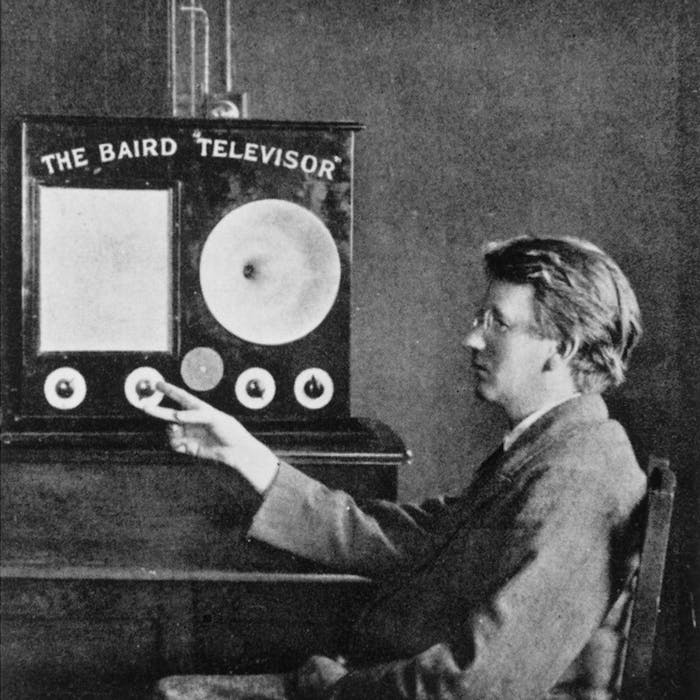
John Logie Baird - TV pioneer
It's hard to believe, but television is still less than a hundred years old. Scottish engineer John Logie Baird gave the world's first demonstration of the concept before 50 scientists in an attic room in central London on 26th January 1926. His early experiments deploying quite crude mechanical picture transfer took place in the seaside town of Hastings in East Sussex and he wrote that his ideas came to him whilst walking in the hills beyond the town.
In 1927, his television demonstrated transmitting pictures over 438 miles of telephone line between London and Glasgow, and he formed the Baird Television Development Company. (BTDC).
In 1928, the BTDC achieved the first transatlantic television transmission between London and New York, and the first transmission to a ship in mid-Atlantic. Baird also later gave the first demonstrations of both colour and stereoscopic television. But though trialled by the BBC, his mechanical system ultimately failed – superseded by electronic systems like that developed by Marconi able to produce a visibly superior picture.
Baird continued to innovate, however, now using electronics himself.
In 1943, Baird proposed a 1000-line Telechrome electronic colour system as the new post-war broadcast standard. The picture resolution on this system would have been comparable to today's HDTV (High Definition Television), but the plan lost all momentum partly due to the challenges of postwar reconstruction and Baird’s early death in 1946.
Hastings remains proud of the inventor.
Further reading
Links to external websites are not maintained by Bite Sized Britain. They are provided to give users access to additional information. Bite Sized Britain is not responsible for the content of these external websites.
